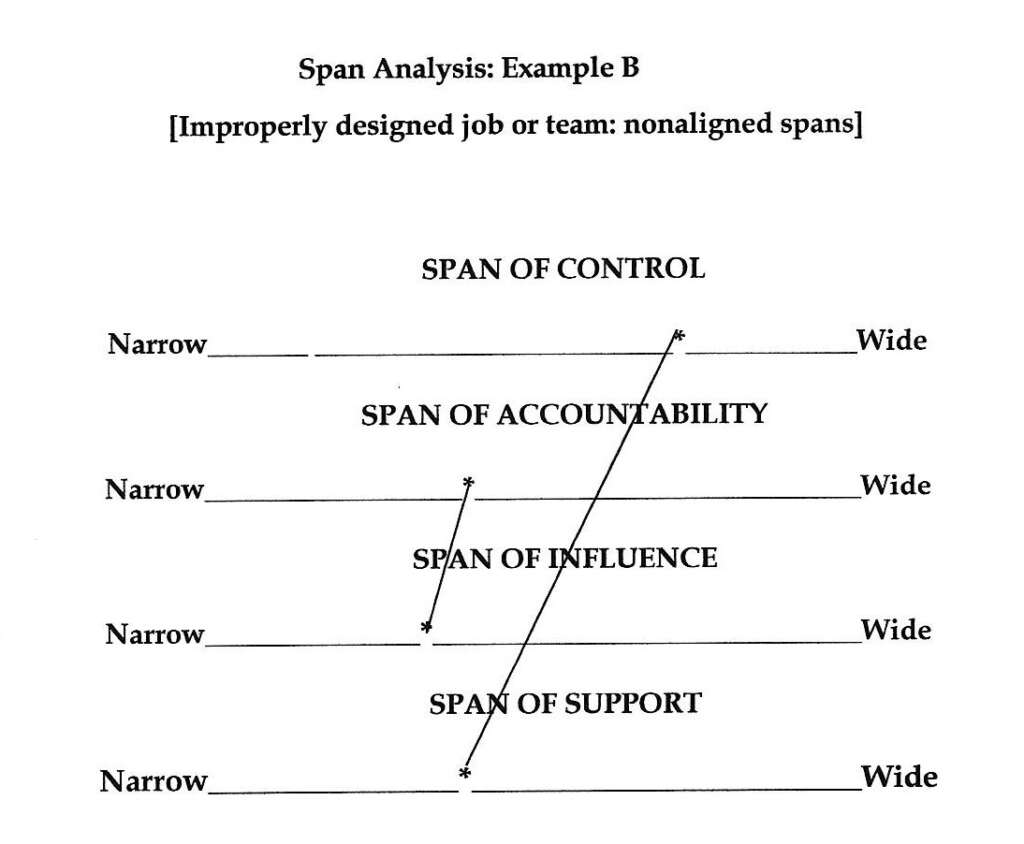
Following is an improperly designed job or team:
In this case, there are both somewhat high levels of control and high levels of support. The job occupation or team has all that it needs to do the work; however, the levels of accountability and influence are low relative to the control and support. This is a job occupant or team that has all that it needs; however, there is little accountability that is commensurate with the available resources. Furthermore, there is not much reaching out (with all of its resources) to other employees or teams in the organization. This is a case of isolated abundance, which can produce complacency.
There are several notable crises that are associated with poorly designed jobs and teams. Each of these crises tends to be found most frequently in organizations that are engaged in particular kinds of production processes.
A crisis of resources is most likely to occur when leaders who oversee the work of specific employees or teams spend too much time thinking about control, influence and accountability, and not enough time thinking about support. This is common in both mass and continues production organizations —and when Assertive Roby Red leadership is prominent.
A crisis of control is likely to occur in highly decentralized organizations and in both unit and specialization production organizations where separate operational divisions are created to be close to specific customers (or types of customers). Supply of resources (span of control plus span of support) exceeds a leader’s ability to effectively monitor job or team trade-offs (span of accountability) and to ensure coordination of knowledge sharing among employees and teams (span of influence). Silos of craft and artistry prevail.








